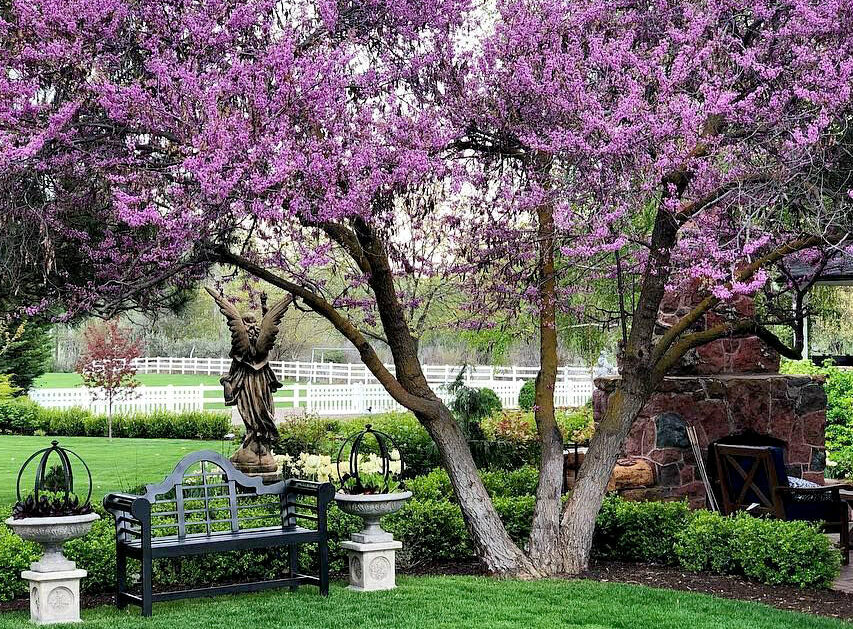Redbuds are great addition to any landscape

JACKSONVILLE, Ill. — While spring-blooming bulbs get much of our attention in the spring, flowering trees shouldn’t be overlooked. One of the best trees for spring color is the adaptable eastern redbud (Cercis canadensis).
What do they look like?
Eastern redbuds are small (20-30 feet tall) trees that have short trunks and spreading branches that form a flat-topped or rounded crown (20-30 feet wide).
Redbuds are among the first trees to bloom in the spring. The pink to reddish-purple flowers develop in clusters along the branches and even occasionally on the trunks of trees (cauliflory). The flowers are produced before their leaves emerge and last for several weeks. After flowering begins, the heart-shaped leaves will begin to emerge.
After being pollinated, flowers will produce green, 3-inch-long seed pods that resemble peas. As the seed pods mature, they will turn brown and can contain up to 12 seeds. The seedpods will often remain on the tree into winter.
More than pretty flowers
In addition to their ornamental appeal, redbuds also provide value to wildlife. Due to their early blooming, they can be important food sources for early-season pollinators such as bumble bees and carpenter bees. Leaf-cutter bees will cut sections out of the plants’ leaves to help build their nests.
The seeds of redbuds may also act as a food source. Birds, such as cardinals, rose-breasted grosbeaks, and bobwhites, as well as squirrels, will feed on the seeds.
How to grow
Because of their relatively small size and prolific spring blooming, eastern redbuds are an excellent addition to nearly any landscape. It is native to Illinois and much of the eastern United States and is hardy from zones 5-9. They grow best in full sun but can tolerate partial shade (flowering will be reduced) and will tolerate a wide range of soils, as long as they are well-drained.
Despite their appeal, redbuds aren’t without problems. They can be difficult to transplant, so it is best to plant younger trees. When purchasing trees, try to make sure that the plant material is coming from northern locations. Because redbuds have such a wide host range, their cold sensitivity can vary, and plant material from warmer, southern locations may not do well during our cold winters.
Unfortunately, redbuds aren’t particularly long-lived, especially when stressed. Healthy trees often only live for 50-75 years. Stressed trees and those that have been infected by pathogens, like Botryosphaeria canker and Verticillium wilt, have shorter life spans.
Redbuds have become increasingly popular plants in our landscapes. Because of this increased interest, many new cultivars have been developed, and there are now over 60 different named cultivars. Cultivars have been developed with white flowers, purple foliage, variegated foliage, yellow foliage (eventually turns green), weeping habit (drooping branches), and compact habit (10-15 feet tall).
Miss Clipping Out Stories to Save for Later?
Click the Purchase Story button below to order a print of this story. We will print it for you on matte photo paper to keep forever.

